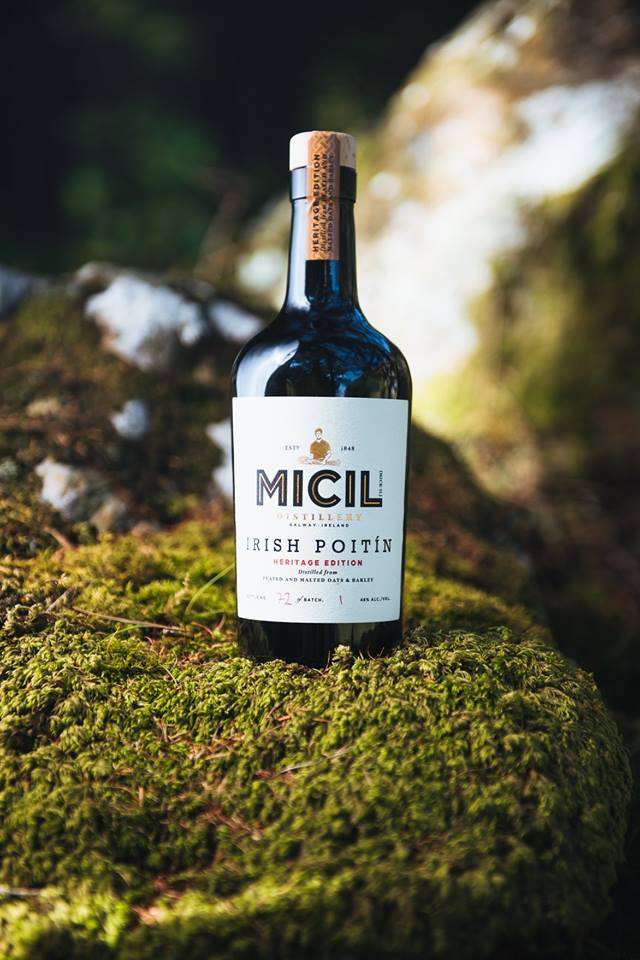What is Poitín? The Irish Spirit Having a Renaissance

When you think of drinking in Ireland, your mind probably jumps to Guinness or Jameson. Those two have been a staple in Irish drinking culture since the 1700s, so it’s no wonder they get the lion’s share of attention. However, poitín (pronounced, puch-cheen) is a spirit that dates back to the 6th century and it’s currently having a moment.
What is Poitín?
Poitín is a clear, high proof (90-180 proof!) precursor to whiskey. The name comes from the Gaelic word pota, which translates to “little pot,” describing the small pot stills used to produce the spirit. In essence, it’s Irish moonshine. The flavor can vary depending on the mash bill, which can consist of whatever grains and cereals available in each region. Traditionally, this meant barley, corn, potatoes, or sugar beets.
A Brief History
As with whiskey, the history of this spirit is a little murky; some credit the invention to Christian monks, others to Viking raiders. Whatever the case, the story of poitín becomes a little clearer around the 17th century. At that time, Ireland was under British rule and suffering from wars and rebellions. In 1641, the Irish Catholic gentry rebelled against the English administration in Ireland, known as the Rebellion of 1641. Subsequent civil wars in Britain meant the Irish rebels were able to maintain control of the island for a period of years until Oliver Cromwell brutally reconquered Ireland from 1649–1653.
A few years later, the government tried to collect a tax on all spirits, including poitín. This was no easy task, however, as distillers hid their bottles and denied existence to avoid tax collectors. Finally, in 1661, King Charles II banned the spirit. This move was also believed to be another attempt to repress Irish culture, fueling the resentment toward British rule. Production did not stop, though, it simply went underground. The Irish continued to make the spirit in rural areas, often on land boundaries to dispute ownership if found. As such, poitín became a symbol of Irish rebellion and irreverence to the colonial British empire. By the 19th century, the spirit even made its way to the US and even featured in the New York Times.
Fast forward to 1997, the ban on poitín was finally lifted. Though many of the recipes have likely been lost in time, over the past few years a handful of distilleries have brought this spirit out of the shadows. Teeling’s Spirit of Dublin, Glendalough, and Micil are creating craft poitín, catering towards the curious tastes of new consumers. Recently, in 2008, poitín received Geographical Indication status from the European Union, which requires the spirit to be solely produced in Ireland. The significance of poitín to Irish culture and heritage should pique the interest of curious imbibers and travelers for years to come.
The Important Stuff
On my recent trip to Ireland, I had the chance to try poitín for the first time, made by Micil. Unfortunately, I wasn’t able to stop by the distillery this time around but was able to find it at a local bar. Made from Irish malted barley and a local botanical called bogbean, it embodies the humble roots of poitín. And at 44% ABV, this is no joke. It was pretty strong, but a similar profile to other grain alcohols I’ve had in the past. I wouldn’t recommend drinking it neat for very long, but use it as a substitute for vodka or gin and you’ll be in good shape. Side note, watch some Irish people taste poitín for the first time.
Where to Find Poitín
First, I’d recommend looking into any of the distilleries that are now producing the spirit:
- Micil Distillery (Galway)
- Glendalough Disillery (Glendalough Valley)
- Teeling’s (Dublin)
You’ll also most likely be able to find poitín in a cocktail bar. Check out the Vintage Cocktail Club if you find yourself in Dublin. Try it neat first, just to get the flavor, then ask your bartender to make something creative.
